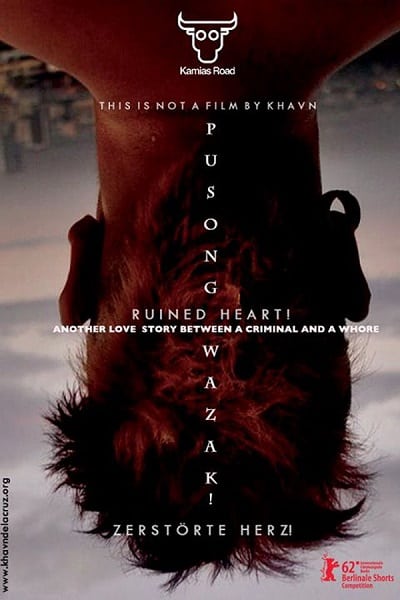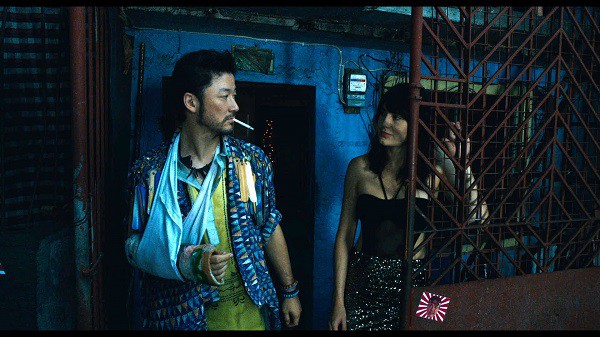
Written by Khavn De La Cruz
Directed by Khavn De La Cruz
Philippines/Germany, 2014
A nobly attempted experiment in visual and sonic storytelling with virtually no dialogue, the film begins as an interesting and beautifully photographed (by esteemed cinematographer Christopher Doyle) silent film of sorts, which quickly becomes a showcase of filmic ideas set to a series of the director’s favourite songs that the scant plot and characters can barely hold together.
The story of Ruined Heart is as old as time, and purposefully so: a criminal (Tadanobu Asano) rescues a prostitute (Nathalia Acevedo) and they fall in love. They try to escape their life of criminality, but the local godfather (Vim Nadera) has designs on the prostitute and the star-crossed lovers try to flee the city. Alas, they are found and killed by the godfather’s henchmen. The plot, however, is not KHAVN’s main concern, it is merely a device in order to string together a series of visual set pieces each one enlivened by a different musical track.
To tell an, albeit simple, story completely through music and film is an interesting one. The actors emote through their faces and actions alone and are capable of communicating this archetypal story with little else. Each musical cue is designed not to telegraph the action but to infuse it with an emotional idea, which at first might feel juxtaposed against the scene itself but still somehow informs it. Whether that is a scene of the two lovers running through the street market at their most joyful to a heavily distorted rock track, or sitting amongst a Bacchanalian orgy watching the action of those around them as a live band play a love song. The use of diegetic and non-diegetic music is used to great effect, from the aforementioned live band to a solo saxophonist playing in a graveyard, these moments seem to work despite themselves, which feels very much like the filmmaker’s intention.
What really holds the film together though is the gorgeous cinematography by Christopher Doyle. Most famous for his work with Wong Kar-Wai, Doyle is in his element photographing the Filipino streets. From the opening shot of a newsstand beneath blue lights to a Ferris wheel aglow with neon, Doyle makes every scene pop straight off the screen. One notable scene involving the criminal being tracked by the camera from behind as he walks, silhouetted by a bright light in the distance that expands and contracts depending on the position of the actor, is one especially amazing experience. There is a feeling though that KHAVN is a huge fan of the films of Wong Kar-Wai and is trying to capture some of that magic with the use of Doyle’s unique eye. Although this film can’t touch the quality of its inspiration, Doyle’s presence is a real boon.
Despite these elements, the film just cannot sustain itself. About halfway through its short 73 minute running time, the repetition of the idea begins to grate. The scant plot moves forward only in increments as the action is constantly paused for another reflective moment set to music. If the viewer does not enjoy the music or finds the pacing too slow there will be little to like here. The film relies heavily on Doyle’s cinematography to pull it through. The acting is perfectly fine by the main leads; Tadanobu Asano is wonderfully expressive and energetic, while the beautiful Nathalia Acevedo commits to her role with aplomb, their good use of body language and mime is a real benefit to the visual storytelling on display.
Perhaps if KHAVN had only expanded on the initial idea of a music only love story, rather than repeat the same method for every scene, the film could have been something more than just an interesting experiment. Granted, the music is great, the cinematography extraordinary, but these are merely great elements that don’t quite make up a coherent whole. Feeling more like a series of music videos than a complete cinematic experience, Ruined Heart: Another Love Story between a Criminal and a Whore is just a slight curiosity more than an absolute must-see.




